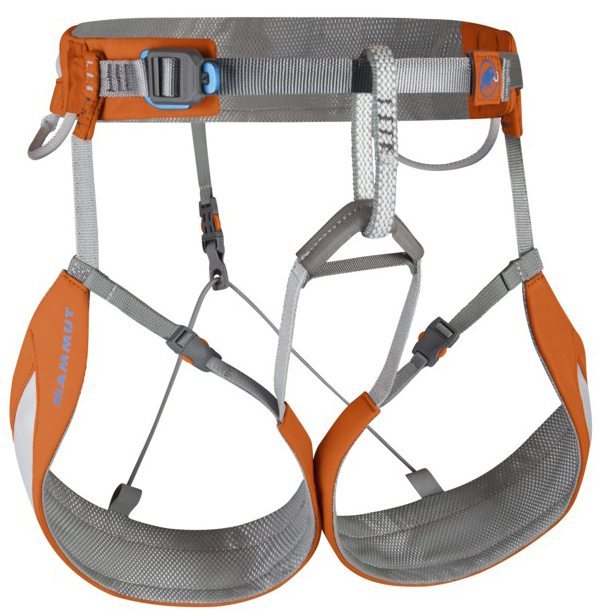
Mammut Zephir Altitude Harness
Size Tested: Medium
Stated Weight: 215 g
Blister’s Measured Weight: 215 g
Stated Features:
- Innovative Split Webbing technology
- Very strong Dyneema® webbing
- Click-buckle for ideal handling of the hip belt
- Easy on/off through plastic click buckles
- Possibility to get in without taking off crampons or skis
- 2 gear loops
- Attachments for 4 ice screw carabiners
- Functional Drop Seat buckle
MSRP: $84.95 USD
Reviewer: 5’10”, 135 lbs
Days Tested: 15
Test Locations: Berner Oberland, Valais, Switzerland; Chamonix, France
Intro
The Mammut Zephir Altitude harness is a very specialized piece of gear. It is designed almost exclusively for glacier travel, where the harness is used much more as a “just-in-case” safety piece than in most applications where the harness is regularly put into active load-bearing situations.
And because this harness isn’t designed to be frequently hung in, it utilizes a rather innovative and stripped-down design to cut weight and pack down small. Since it weighs just 215 g and packs down smaller than a soda can, this harness finds its way into my pack on just about every alpine objective.
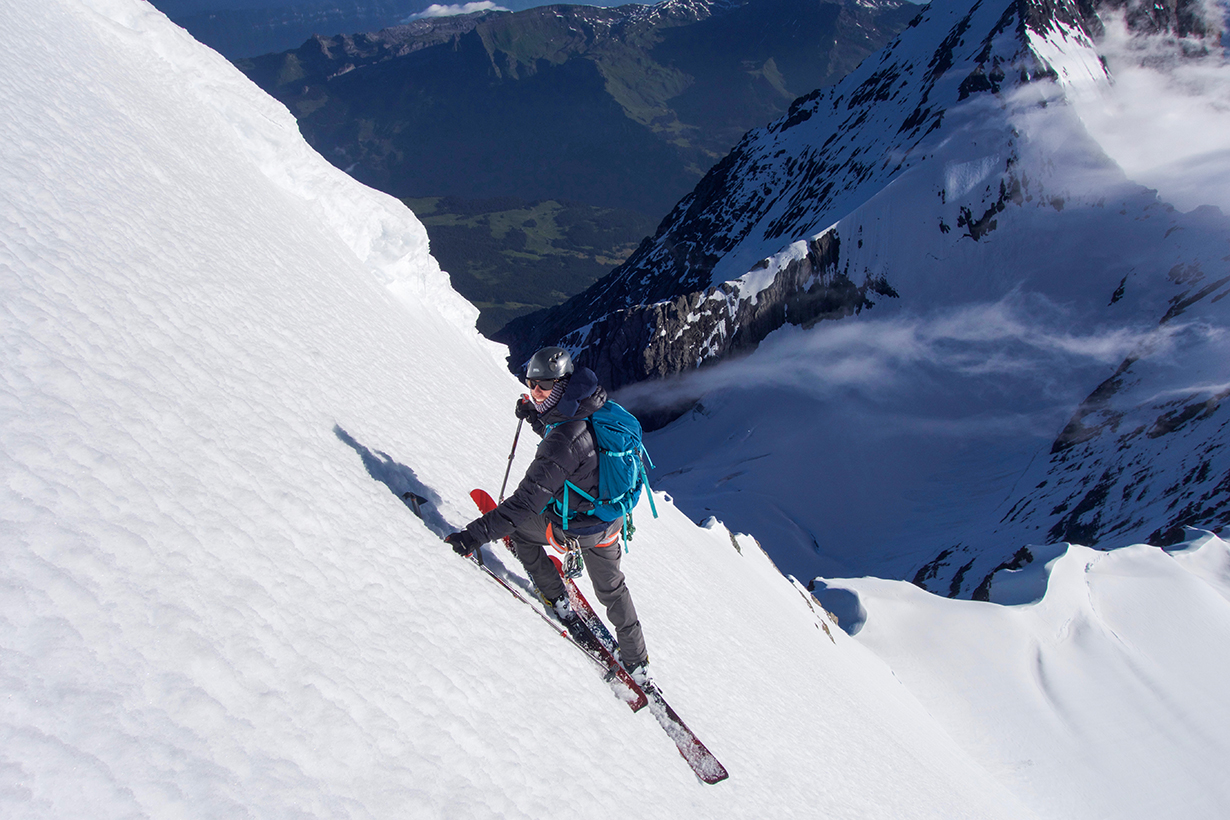
Fit
The Zephir Altitude Harness is pretty pared down without a lot of extra material to allow for adjustability. But it does come in four sizes, so you should be able to get a fit that works for you. The Medium is probably a touch big for my 29-30” waist, as I have a solid 8” of extra webbing on the waist belt. But functionally, this isn’t a big deal at all.
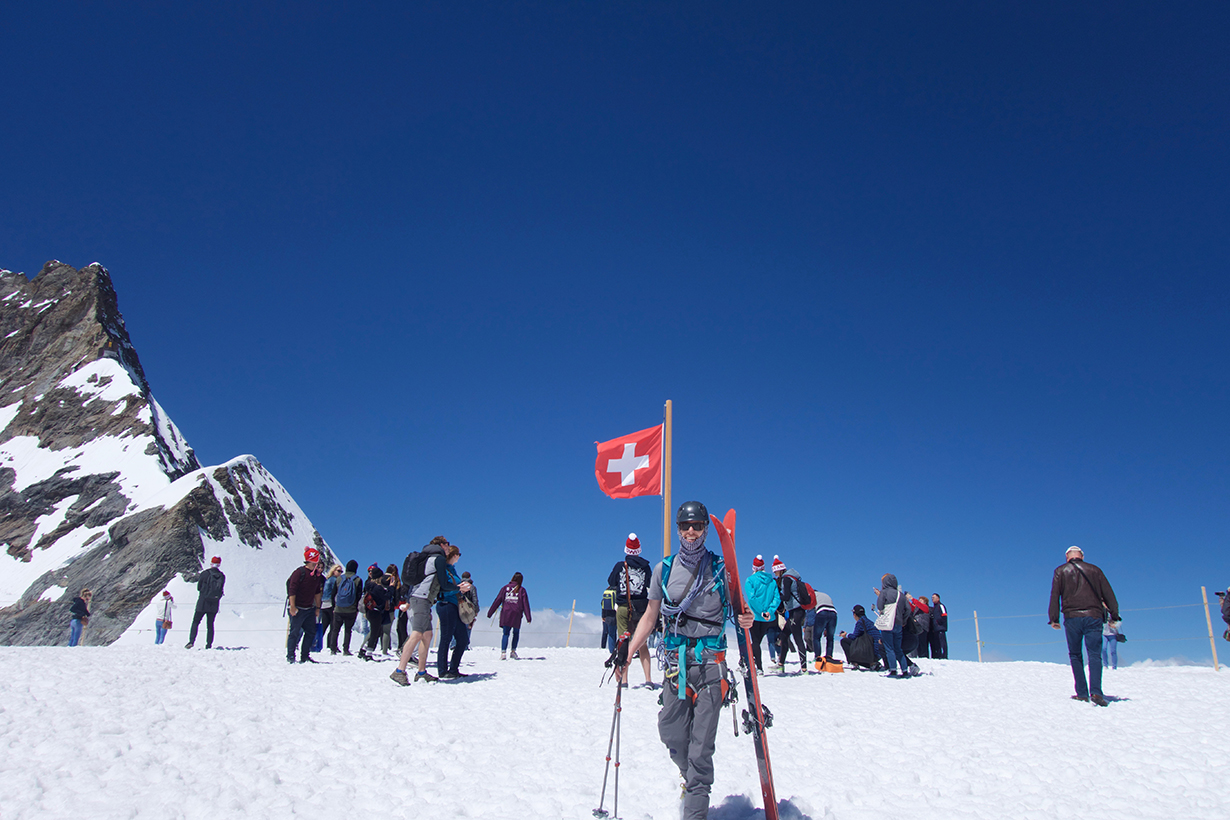
The leg loops are adjustable and feature little elastic sections to help with range of motion and to deal with bulky outerwear. It’s a bit unnerving seeing elastic in a harness where you typically see load-bearing webbing, but I suppose you just have to get used to that. Either way, I’ve been able to get a great fit with this harness, and it has proved quite comfortable to wear under a pack’s hip belt. No complaints on the fit front from me.
Features and Design
This harness is designed with simplicity and low weight as priorities. There is no padding on the waist or leg loops; instead it uses what Mammut calls Split Webbing technology. Where in most harnesses a single piece of webbing makes up the waist and leg loops, on the Zephir Altitude, this piece of webbing forks into two pieces to increase the contact area between the harness and wearer. This spreads your weight out over a larger area when the harness is weighted, which is much more comfortable (and lighter) than other alpine harnesses that use simple webbing waist and leg loops. The split webbing loops are simple and effective.
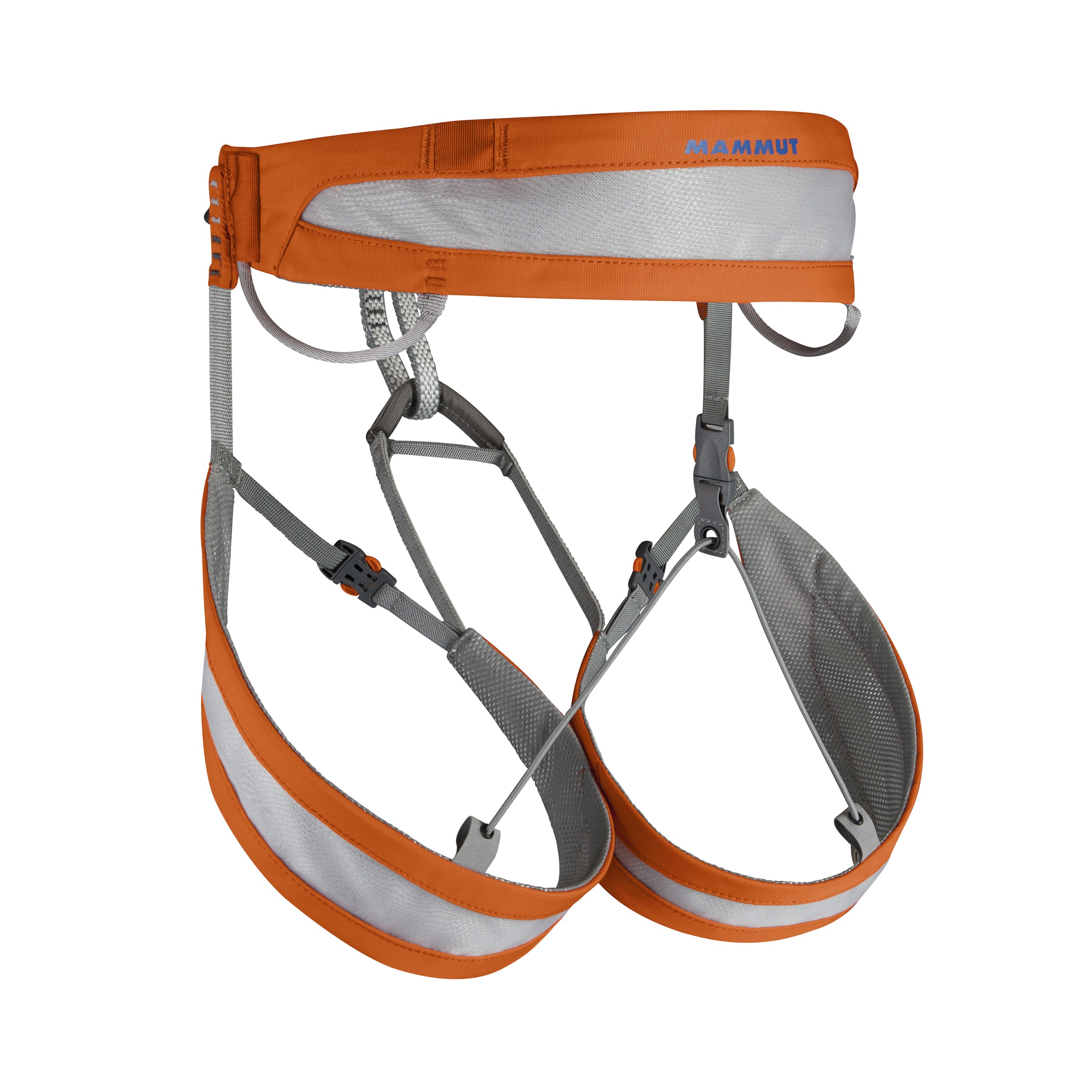
The two pieces of webbing are separated by a sturdy mesh fabric that theoretically allows the straps to breathe. Perhaps this is true, but it’s pretty tough to notice through long underwear and 3L ski pants (or softshell pants).
The other key design feature of the Zephir Altitude is that it can be put on and taken off without having to step through the leg loops or waist belt. This means that you can easily and quickly put the harness on with skis, ski boots. crampons, etc. This is accomplished by the click buckle waist closure (more on this later) and two small clips on each leg. With these three clips undone, the harness lays flat and can be put on easily regardless of what’s on your feet or how precarious your stance is.
However, the full leg loop is not load bearing, only the back part that attaches to the waist belt and is clipped to the belay loop. This results in the leg loops riding up when weighted. This isn’t a problem on rappels when there is a chance to adjust everything, but in a situation like a crevasse fall, there could be some, er, collateral damage depending on the particulars of the fall. I haven’t suffered any unexpected falls or damage to my two best pals, but it is something that occasionally sinks into my mind.
The gear loops on the Zephir Altitude are very flexible and made of a textile. They aren’t as easy to clip and unclip gear as the plasticized loops on most dedicated climbing harnesses, but for a glacier harness, that really isn’t an issue. The two gear loops are amply sized and can easily hold a few screws, cord, extra biners, and other crevasse rescue gear. There are also slots for four ice screw biners if you find yourself placing a lot of ice pro.
Click Buckle
Matt Zia reviewed the Mammut Togir Click harness that features the same click buckle closure that’s featured on the Zephir Altitude. He had some issues with the plastic clip coming loose after a while, and I have noticed the same thing; the plastic piece definitely doesn’t clip as securely into the aluminum frame as it did when it was new.
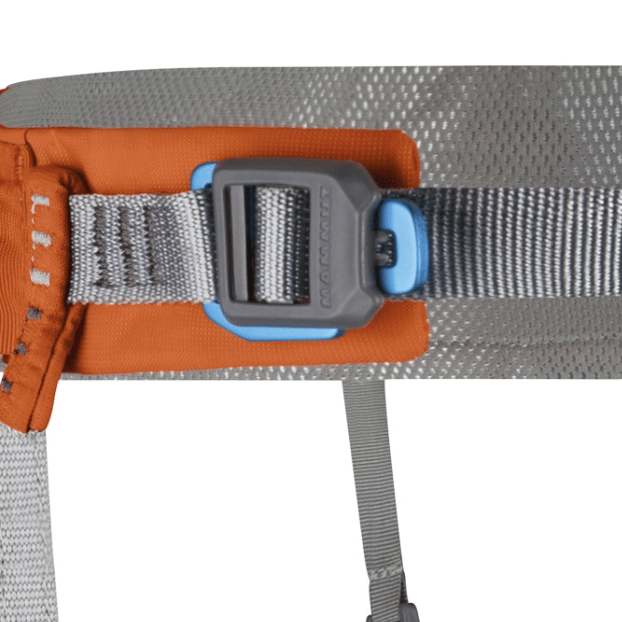
However, I think this is a non issue for this harness. If I was scurrying up chimneys or climbing hard in this harness, I might be worried about a loose buckle getting caught up and pulled open. But as it is, the click buckle on the Zephir Altitude is usually safe and sound under a pack’s hip belt, and not in a position to come undone.
The more difficult thing for me is coming to grips with a plastic load-bearing piece. It just doesn’t seem right. Yes, it has been fully tested and certified, but it admittedly still weirds me out a bit.
Gripes?
I have just two odd gripes with this harness:
(1) I almost always am wearing gloves when using this harness, and the little clips on the leg loops can be tough to manipulate with those on.
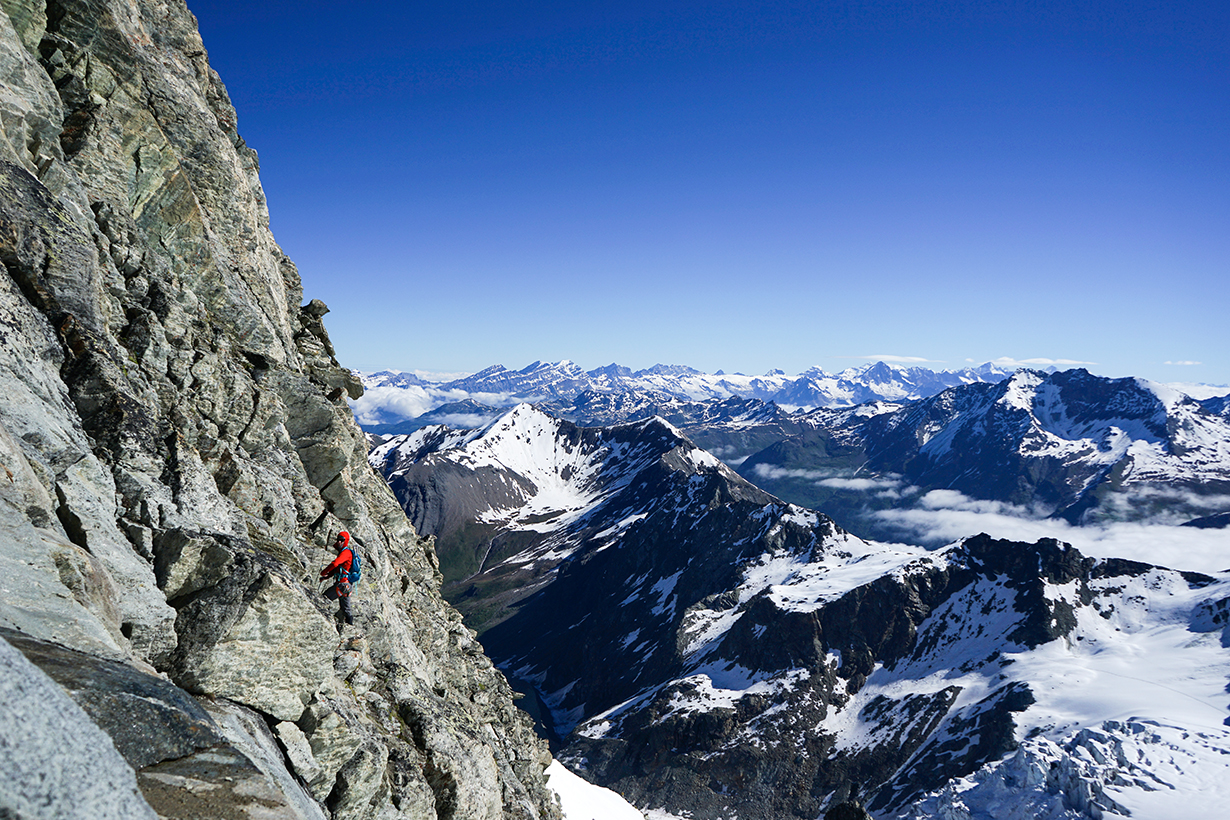
(2) There is no haul loop. This would a sweet ultralight harness for ridge scrambles and easier alpine climbing, but there isn’t a good place to trail a rope or clip a chalk bag. Not a huge deal, but a few grams could add a solid chunk of utility. You can clip a chalk bag in between the webbing of the drop seat clip, but it requires some attention, and the chalk bag sits a bit low.
Comparisons
It is worth noting that the old standard in the world of lightweight harnesses, the Black Diamond Couloir, has been revamped for this season and now bears a striking resemblance to the Zephir Altitude in both design and weight. The old Couloir had a stated weight of 230 grams, while the new version has a stated weight of 215 grams — same as the Mammut Zephir Altitude.
The Zephir Altitude retails at $85, while the new Couloir is priced at $59, same as the older version. (We’ll be reviewing the new Couloir and comparing it both to the old version and the Zephir Altitude later this year.)
Petzl also recently introduced their own Altitude harness, and it also looks strikingly similar to the Zephir in design. But it retails for $79, and has a stated weight of 150 g.
Bottom Line
The Mammut Zephir Altitude harness is a great piece of gear for those who often find themselves on glaciers or on easy alpine climbs. It is light, packs small, is simple, and it’s incredibly easy to put on. As long as your objective doesn’t involve vertical, pitched-out climbing or rappels numbering in the double digits, the Zephir Altitude is definitely worth a look.

I fully agree with what Sam says. I also use the Zephir when glacier skiing. It packs small and you don’t notice it when you wear it which is how it should be. Luckily never had to use it so there’s not much I can add. I’m a 34 around the waist and I have an Zephir in Large. I’m defenitely at the small spectrum for an L but it doesn’t slide down.
HTH